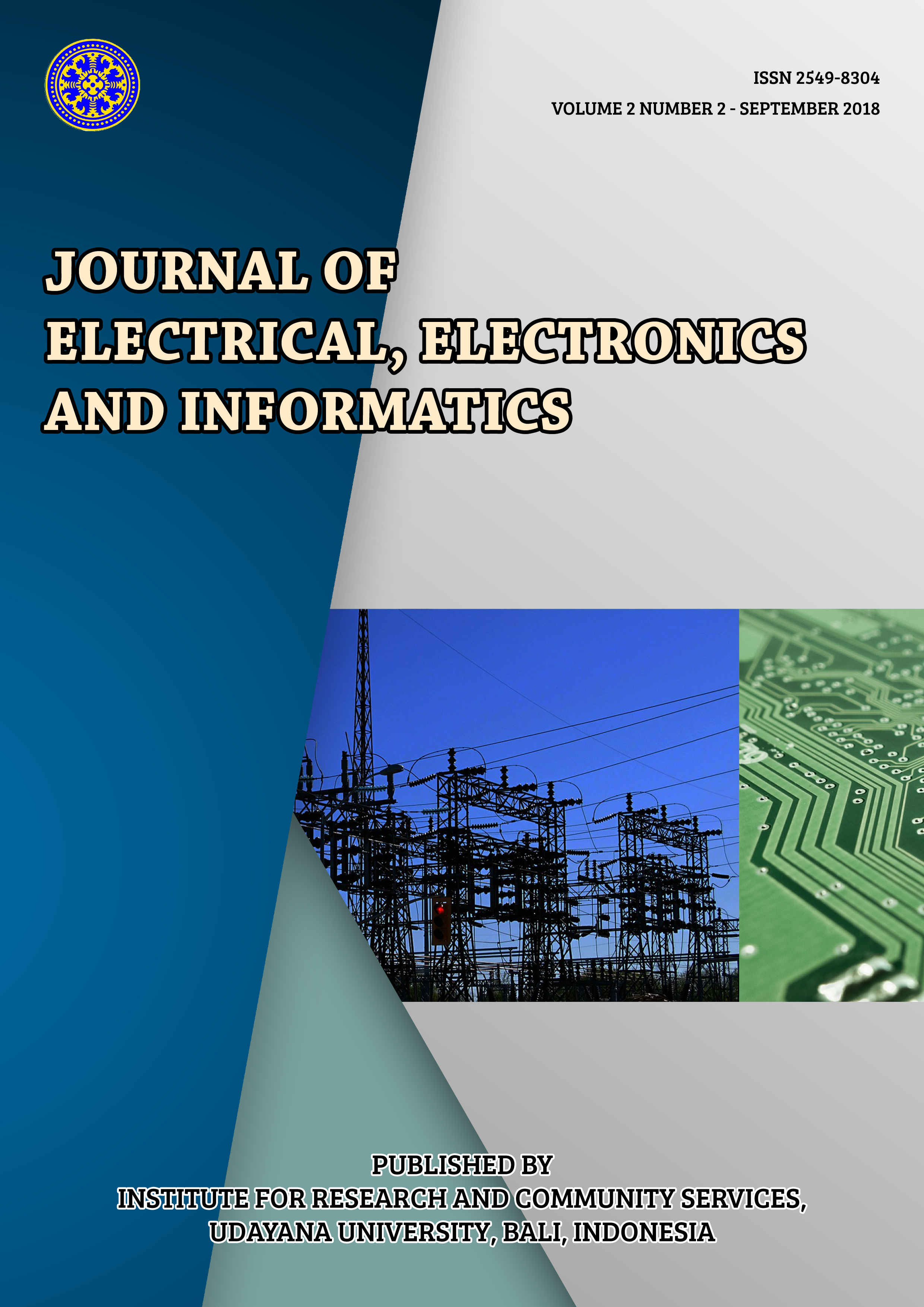Damping Harmonic Distortion Using Active Filter with PID Control at Udayana University Faculty of Engineering Bukit Jimbaran
Abstract
Increased THD (Total Harmonics Distortion) in the utility, caused by the increasing operation of non-linear loads. High THD current (THDi) will affect the increase of power losses in the power system. In this study, THD analysis of the simulation results was performed according to IEEE 519-2014 standard on existing condition, shunt active filter operating condition and shunt active filter operating conditions with PID (proportional integral derivative) control, also analyzed losses before and after harmonic impact. The result of losses analysis on existing condition: losses phases R 3.38%, phase S 2.29%, phase T 3.33%. Total losses on existing condition 9.01%. Operation with active shunt filter is obtained losses for phase R 1.60%, phase S 2.46%, phase T 1.67%, so the total losses become 5.73%. While using the active filter with PID control for losses phase R 1.02%, phases S 0.89%, phases T 0.99%, so the total losses fell to 2.18%
Downloads
References
[2] Mielczarski, W. 1997. Quality of Electricity Supply and Management of Loss Networks. Melbourne: Puma Press Publishing and Printing.
[3] Dugan, R.C., McGranaghan, M.F., Santoso, S., Beaty, H.W. 2004. Electrical Power System Quality-SecondEdition. The McGraw-Hill.
[4] Dugan, R.C; Rizy. 2001. Harmonic Considerations for Electrical Distribution Feeders. National Technical Information Service, Report No. ORNL / Sub / 81-95011 / 4 (Cooper Power Systems as Bulletin 87011, "Electrical Power System Harmonics, Design Guide").
[5] IEEE Recommended Practices and Requirements for Harmonic Control in Electric Power Systems. IEEE Standard 519-2014.
[6] Izhar. Metal. "Performance for Passive and Active Power Filter in Reducing Harmonics in the Distribution System", National Power & Energy Conference (PECon) 2004, IEEE Proceedings, Kuala Lumpur, Malaysia, pp. 104-108, 2004.











